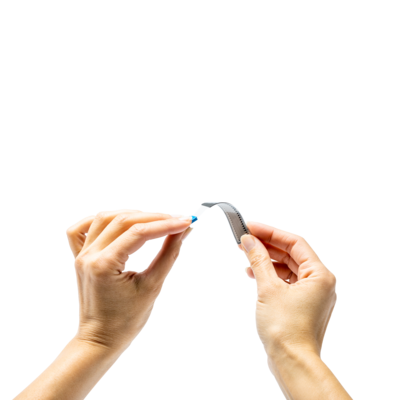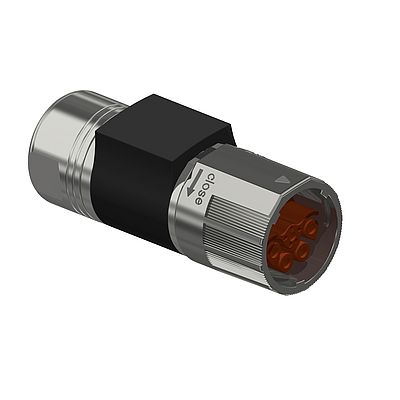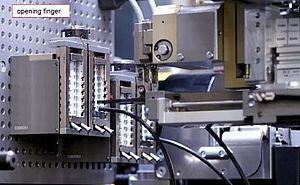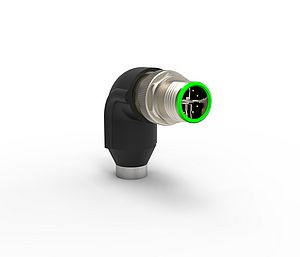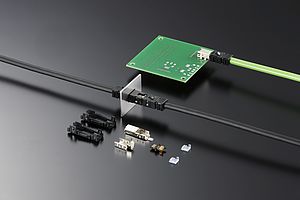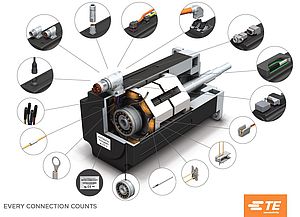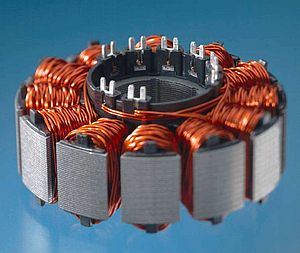In the context of Industry 4.0, highly flexible production equipment is playing an increasingly important role. Unlike traditional factories dedicated to producing specific goods, these plants can manufacture diverse products or variants in different quantities. To achieve this, they leverage advanced automation and robotics technologies. Thanks to their high adaptability, they can be flexibly adapted to meet different customer and production requirements. Smart connectors which support digital remote monitoring for predictive maintenance can help ensure the productivity of each module in these factories.
Frequent retooling and increasing number of mating cycles
Retrofitting such production equipment involves rearranging, replacing, or expanding modules and components. It is therefore important to integrate simple, fast, robust, and reliable connectivity that can resist vibration, shock, temperature fluctuations and other environmental influences. In terms of flexibility, connectors have several advantages over hard-wired modules. They act as an interface for the transmission of electrical signals, data, and power between different parts of the installation. They offer high electrical performance, low transmission loss and good signal integrity to ensure the efficiency and reliability of the production process. The retooling of flexible systems results in an increasing number of manual mating cycles. As this is often done under time pressure, connectors may not be properly locked. The resulting declination of the Ingress Protection (IP) category can lead to machine malfunction – and thus to a complete shutdown of the entire production line, resulting in additional costs and time delays. Due to the complexity and number of connectors in the plant, finding a fault is often difficult and can be like looking for a needle in a haystack.
Many good reasons for smart connectors
Users want to be informed about the status of their mechanical and electrical connections without having to develop costly and time-consuming solutions themselves. The aim is to detect system malfunctions or potential failures in advance and to create the basis for optimum production based on smart and reliable connections. A smart connector can help ensure correct mating and provide information on whether a connector is delivering the desired solid performance at every stage of the product lifecycle.
For these reasons, there has long been a desire in the industry to add intelligence to connectors. TE is therefore working with tacterion, a leading company for tactile sensor technology based in Munich, Germany. The aim of the partnership is to use intelligent touch and force sensor technology to digitize industrial processes and to develop smart solutions that combine the reliable TE connectors with the novel sensor technology from tacterion. These will enable digital remote monitoring of plants – making the connectors a crucial component for predictive maintenance, condition monitoring, and safety applications in Industry 4.0.
Flexible tactile sensors integrated into the connector
tacterion holds patents on technologies for bendable and stretchable proximity and touch and force sensors with the brand name plyon®. The sensors – attached to curved or bent surfaces – are characterized by their flexibility, robustness, and high signal integrity. An extremely thin and flexible hybrid sensor technology with a combined capacitive and resistive measuring principle can detect forces and touches, and even approximations.
The plyon® sensors have a total thickness of only 0.5 to 0.7mm. They are suitable for a minimum bending radius of up to 1.0cm while maintaining their full measuring range. The sensors are extremely durable and resistant to static loads. Thanks to tacterion's proprietary drift compensation technology, they provide virtually drift-free readings over time, allowing them to be used in demanding industrial environments.
TE uses flexible plyon® technology to make their own products even smarter. The sensor technology is mechanically and electrically integrated into a TE connector design. It is a challenge to accommodate so much additional high-tech in the smallest possible space, because the core functionality of reliable transmission of data, control, measurement or regulation signals or power supply must be guaranteed. In addition to voltage, output current and power consumption, tactile signals are also recorded, which reveal a great deal about the state of the connector.
Capture and utilize valuable unexploited data
Thanks to the plyon® sensor layer, a "smart" connector can, for the first time, collect previously undetectable data on condition and interaction and derive valuable information from it, such as whether a mis-mating has occurred. The sensor monitors the condition of the connector and reports malfunctions, such as deviations or open connections, to monitoring systems. Plug and play allows machines and systems to be retrofitted with this advanced digital technology. The information gained can be shared on the shop floor or with higher-level monitoring systems to help optimize process efficiency, reduce costs and help minimize machine downtime through predictive maintenance. During installation, commissioning documentation can be simplified as the factory handover can be easily and digitally monitored and documented. There are many applications and use scenarios for smart connectors. Therefore, the plan is to gradually expand their use in areas such as robotics and automation and, in the long term, in transport and medical technology.
Authors: Kurt Robert Hippler, TE Connectivity, and Dr. Michael Strohmayr, tacterion


